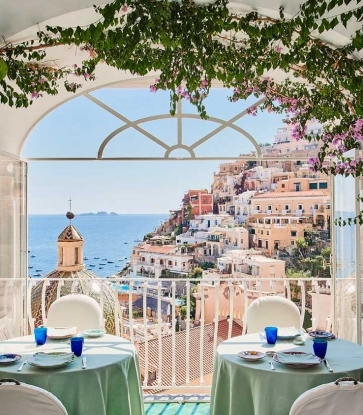“We trust the history more than the expert,” Matteo Bisol of Venissa Winery shares on his family’s ability to recreate an intimate vineyard in the middle of Italy’s Venetian Lagoon.
In 2002, Matteo’s grandfather, Gianluca Bisol, discovered the Dorona di Venezia grape on Mazzorbo—about a 30-minute boat ride from the main island of Venice. Out of 1,200 types of vines throughout Italy, the white-skinned variety of Dorona is the only one to adapt to survive in the Venice Lagoon, but also one which was thought to be lost after the 1966 acqua alta (high tide) that flooded the islands and destroyed much of the islands’ viticulture. “My grandfather said, ‘We need to recover this.’”
So in 2007, the Bisol family took a grand risk: replanting 4,000 vine plants occupying less than one hectare of land, despite experts’ caution about the grape’s inability to grow and the ever impending threat of yet another acqua alta. More than a decade later, though, Matteo works alongside his uncle, Desiderio Bisol, as well as award-winning Italian winemaker Roberto Cipresso, and together they already have two vintages in their portfolio. “Today, Venissa is the only Dorona wine produced in the world,” says Matteo on the family’s accomplishments with the oft nicknamed ‘golden grapes.’
Although the Bisol name was first associated with quality Prosecco, growing since 1542, and a winery introduced in the late 1800s, Matteo only works on the Venissa vineyard. “Prosecco and Dorona are opposite, I only follow Dorona and Venissa because you need a completely different mindset for these type of wines,” he says. “Prosecco is about freshness and Venissa about complexity, you drink Prosecco young and Venissa aged.”

Aging is actually Matteo’s favorite part about winemaking—and with Venissa’s production requiring up to four years of aging, it’s a crucial part of the production. “The grapes macerate in a stainless steel tanks for the first year, then we move the wine to concrete and leave it for two to three years, but without filtering. It’s important for the wine to remain with the yeast so the wine will continue developing and then we bottle. It takes a long time but at this point, we have the whole life of the wine.”
The distinction and duration of this process gives way to the exclusivity of the label, with small batch production of 3,000 bottles per production. It also defines the Venissa wine’s characteristics and unique shelf life.
“Most of the 2014 white wines are already old. Today, when I drink this wine I don’t think it’s elegant,” says Matteo regarding the 2014 vintage in front of us. “It shows a lot of structure and personality but it needs another three to five years to find elegance.”
Matteo continues, “If I had a case of this wine, I would open a bottle every year. There’s different moments of the life of a wine—like a person, there’s different periods in our life—when we’re young, we’re like this wine but when we’re older, we find our elegance. Drinking an old wine can be interesting because it has completely different sensations.”
Though aging is his favorite part, Bisol shares maceration is the most important part of the winemaking process, and much a part of the reason that Venissa has an aging factor. “In this period you have to interpret every vintage without following rules, it’s a matter of experience and instinct,” he explains. “We’re lucky to work with Roberto; his experience really makes a difference when it comes to producing a macerated white wine.”
With the 2014 vintage still highlighted as Venissa’s latest production, I ask the young winemaker what’s next for the rest of his team (around 30 members, including the staff at Venissa’s MICHELIN-starred restaurant on property and five-star boutique hotel on the neighboring island of Burano). Matteo simply states, “We’re just trying to make the world’s best white wine.”
Photos by Mattia Mionetto.






















